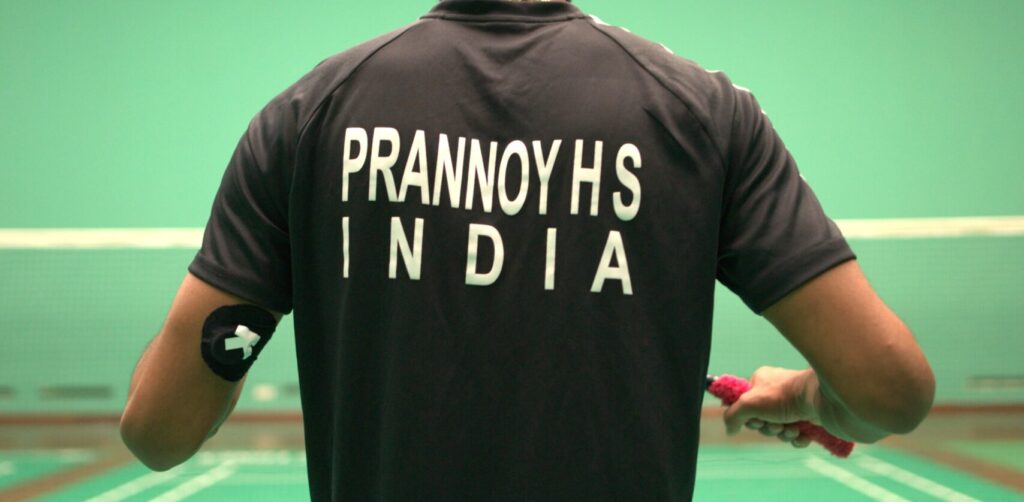Cold water immersion (CWI) has gained popularity among a diverse group of people, including athletes, for its effects in reducing inflammation, exercise recovery, improving overall health and even weight loss. Wim Hof’s popularity in recent times has only helped the cause and more and more people are using CWI or ice baths.

Highlights
- Claims of health benefits from cold water go back centuries. Hippocrates said water therapy allayed lassitude and Thomas Jefferson used a cold foot bath every morning for six decades to ‘maintain his good health’,
- High intramuscular pressures, sustained release of calcium from the sarcoplasmic reticulum, and strain contribute to mechanical stress during high-force skeletal muscle contractions,
- Cold water immersion is used to reduce hyperthermia by bringing down the core temperature after exercise.
Intense exercise causes physiological stress that results in energy depletion, hyperthermia, muscle damage, oxidative stress, inflammation and nervous system fatigue. The consequence: reduced performance, soreness, decreased muscle function, stiffness and swelling that may last several days.
Recovery is crucial for an athlete for uninterrupted training and especially around competitions. Many modalities are used to increase the recovery rate, such as massages, foam rolling, hyperbaric oxygen therapy and cold water immersion.
Claims of health benefits from cold water go back centuries. Hippocrates said water therapy allayed lassitude and Thomas Jefferson used a cold foot bath every morning for six decades to ‘maintain his good health’. Let’s look at research and see if there is evidence for these claims.
Intense exercise causes physiological stress that results in energy depletion, hyperthermia, muscle damage, oxidative stress, inflammation and nervous system fatigue. The consequence: reduced performance, soreness, decreased muscle function, stiffness and swelling that may last several days.
Recovery is crucial for an athlete for uninterrupted training and especially around competitions. Many modalities are used to increase the recovery rate, such as massages, foam rolling, hyperbaric oxygen therapy and cold water immersion.
Claims of health benefits from cold water go back centuries. Hippocrates said water therapy allayed lassitude and Thomas Jefferson used a cold foot bath every morning for six decades to ‘maintain his good health’. Let’s look at research and see if there is evidence for these claims.
Science
Any exercise—whether it is eccentric, a completely new routine or a high-intensity exercise—induces stress that may be metabolic, mechanical or both. Metabolic stress induced by endurance or interval training involves a high rate of aerobic energy transformation and heat generation. This contributes to an increase in reactive oxygen species (ROS) generation.
ROS are highly reactive and can denature proteins, nucleic acids and lipids, which destabilize muscle cell structures, including the sarcolemma and structures of the excitation–contraction coupling system. This reduces force-generating capacity and athletic performance, while disruption of the sarcolemma makes the muscle fiber more permeable.
The hyperemia from exercise can also promote accumulation of metabolites, which increases the osmolality (concentration of the dissolved particles) of the cell. This increases the chance of edema which increases mechanical stress on cell structure which has a cascading effect of increasing the route of O2 delivery, compressing capillaries, impairing O2 delivery and waste removal, and soreness. Overall, these exercises cause stress on cardiovascular and neurological systems.
High intramuscular pressures, sustained release of calcium from the sarcoplasmic reticulum, and strain contribute to mechanical stress during high-force skeletal muscle contractions. Eccentric exercises evoke a greater degree of mechanical stress and subsequent muscle damage compared with concentrically or isometrically biased exercise. This is due to the combination of cross-bridges producing force while lengthening, greater force per muscle fiber, and the large degree of force contribution by passive tissues.
Consequences of all the above contribute to soreness and reduced function. Loss of calcium homeostasis within the cell causes damage to cells, edema and cytokines released from the muscle exposed to mechanical stress initiate an inflammatory response, increasing the potential for secondary damage and resultant impairment of function.

Cold water immersion is used to reduce hyperthermia by bringing down the core temperature after exercise. Changes in peripheral tissue temperature affect change in core temperature. In CWI, the whole body is immersed in water. This conductive cooling causes substantial decrease in core body temperature. Also, sustained blood flow to the skin allows for convective cooling during CWI and further cooling in the post-cooling period.
Change in temperature of tissues stressed by exercise is the fundamental physiological change induced by cooling and a determining factor in the subsequent physiological changes affecting recovery from exercise.

Benefits
- Cooling may reduce metabolic stress experienced by the muscles by reducing muscle energy demand. Reducing the rate of mitochondrial energy production by reducing intramuscular temperature can be expected to limit ROS-mediated damage incurred by stressful exercise. However, no human studies have been done to investigate this.
- Studies have shown enhanced metabolite clearance and reduced metabolic waste accumulation, including inorganic phosphate and hydrogen ions. Muscle acidosis is a contributing factor in peripheral fatigue and impairment of force-generating capacity of muscle and may be relieved by cold therapy post-exercise, possibly contributing to short-term recovery enhancement.
- Cooling causes anti-inflammatory effects due to the reflexive vasoconstriction. Even though constriction and reduction in blood flow to stressed muscles may sound counterintuitive to recovery, it is thought to reduce edema, pain, functional impairment, and secondary damage from inflammation.
- Cooling reduces NCV (nerve conduction velocity) of both sensory and motor neurons, reducing the sensation of pain and reflexive spasm, respectively. Herrera et al. found CWI to be the most effective cooling modality to reduce motor and sensory NCV in the 30-min post-cooling period. Thus, cooling may have an analgesic effect before motor neurons are significantly affected, allowing for mobility with minimal pain sensation.
- CWI can alter neural activity of the heart, as well as restore central blood volume and enhance cardiac preload. Both of these cardiovascular indices have been suggested to improve recovery from metabolically stressful exercise. Several studies have shown improved cardiac efficiency, as indicated by lower heart rates, increased cardiac output and/or increased stroke volume.
- CWI may restore vagal tone and normalize parasympathetic modulation of heart rate following intense exercise. Heart rate recovery and heart rate variability indices seem to be improved by immersion of subjects in thermoneutral (34°C) or CWI (15°C) temperatures compared to no immersion. Although cardiovascular function altered by CWI may be theoretically beneficial, few studies have investigated the significance of these changes with respect to the recovery of performance per se.
- A decreased cortisol level and increased concentration of norepinephrine and dopamine was observed following CWI at 14°C.
Caution
- Long-term effects of chronic cryotherapy use should be considered as vascular remodeling following an exercise stimulus that has been shown to be impaired.
- Cold applications of excessive duration (>30 min) or low temperature (<10°C) may increase edema as they have been shown to result in cold damage to cells.
- Cooling skeletal muscle impairs contraction kinetics in non-fatigued muscles indicating that the rate of excitation–contraction coupling is impaired. It is therefore important to consider the effects of reduced muscle temperature when interpreting performance outcomes or using cold between consecutive exercise bouts, as the muscle may still be at sub-physiological temperature.
Conclusion
Although CWI seems to have many positive benefits following stressful exercise, there is little research studying these physiological responses. Although CWI may have a role in facilitating recovery from some types of exercise, studies investigating functional outcomes are needed to substantiate if CWI has an effect greater than simply a placebo or subjective improvement in recovery.
Disclaimer: The contents of this article are for general information and educational purposes only. It neither provides any medical advice nor intends to substitute professional medical opinion on the treatment, diagnosis, prevention or alleviation of any disease, disorder or disability. Always consult with your doctor or qualified healthcare professional about your health condition and/or concerns and before undertaking a new healthcare regimen including making any dietary or lifestyle changes.
References
- Cold water immersion and recovery from strenuous exercise: a meta-analysis
- Cold water immersion: kill or cure?
Scientific Evidence-Based Effects of Hydrotherapy on Various Systems of the Body - Cold-water immersion and other forms of cryotherapy: physiological changes potentially affecting recovery from high-intensity exercise
- Evaluations of cooling exercised muscle with MR imaging and 31P MR spectroscopy.








